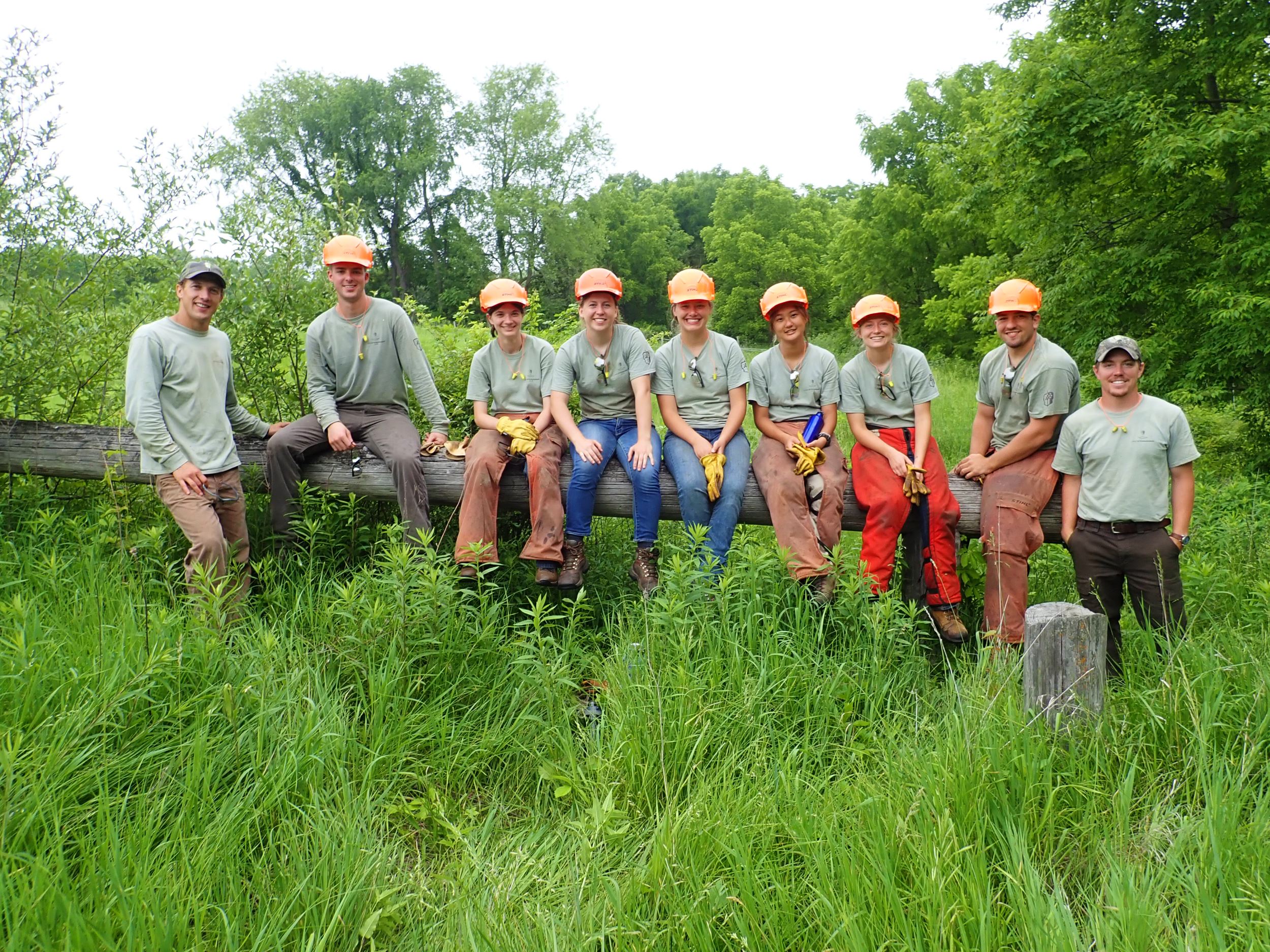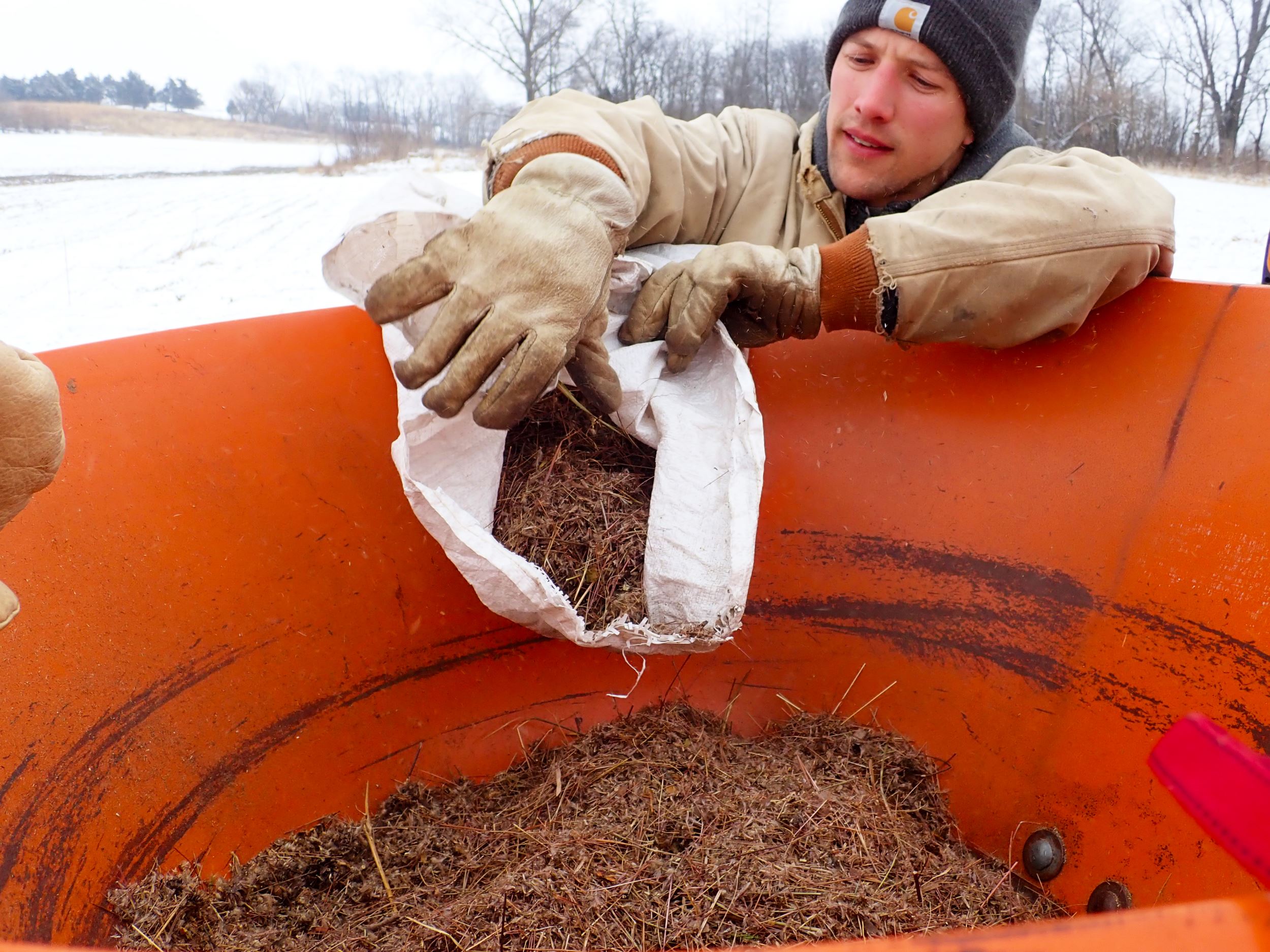Led by the Land
By Katy Heggen & Kerri Sorrell on April 29, 2019 in Blog

For 40 years, INHF has worked to protect some of the best places in the state. But when the paperwork is signed and the land is protected, what comes next? For many of those protected places — especially the ones entrusted to or owned by INHF — the story is just beginning.
INHF calls this continuing relationship with the land “land stewardship” — the act of looking after, restoring and aiding the land to be its healthiest and most resilient. At INHF, the land stewardship department — assisted by eager INHF volunteers, interns and staff — are the caretakers of some of Iowa’s special places.
“My primary goal as land stewardship director is to ensure that the lands INHF owns or has worked to permanently protect are stewarded in a way that embodies healthy, native ecosystems in Iowa,” said Ryan Schmidt. “We’re always listening to the land, learning about it and adjusting our work to guide it toward its healthiest version.”
Each piece of land INHF stewards has a management plan unique to its specific features and landscapes, guided by modern research and experience. But much of the stewardship team’s work is guided by the land itself, whether wild land, agricultural land or a combination of both.
“The management plan provides a framework for future work but is certainly not the ‘end all be all,’” said Schmidt. “We are continuously updating and changing our plans, simply because the land is leading us in a different direction. In our quest for understanding the lands that we steward, we realize that we must stay flexible. Something we thought may work in the past may not be the best option in the future.”

INHF employs many stewardship practices to help restore or maintain the health of the land. Those practices include using prescribed fire, managing invasive plant species and natural grazing. They strive to be as non- intrusive as possible, following the pace and processes that nature is familiar with. Human influence, from Schmidt’s perspective, should only be felt in service to the land.
“Our goal is to work with the land, not just on it,” said Schmidt. “We look at land management a bit differently. We ask, ‘How can we connect with or become a part of the land in a way that provides for the best interest of the land?’ Stewardship is not about putting our human preferences or personal goals for a property first, but rather working with the land to better understand its needs. We’re not looking to force man-made solutions on land that may know how to care for itself better than we do.”
In the end, stewarding lands is about learning our place in a larger ecosystem and encouraging Iowans to discover a connection with the land.
“Every day, we attempt to help people connect and understand the world around us through the work that we do, through volunteer events or our internship program,” said Schmidt. “I’m always learning and dreaming when I’m on the land, and we’re asking ‘How do we help people to believe that nature is part of all of us, it is in our blood’? Only when we discover our personal connection to the land can we care for it in the best way.”